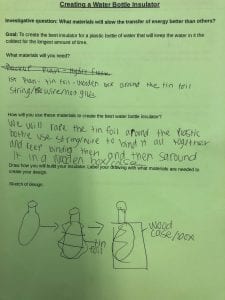This week in 6th grade science we began to dive deeper into our driving question, “How can I smell things from a distance?”. To investigate this, students were given menthol crystals to determine whether a single material could exist in all three states. Along with this, as students conducted this experiment they were required to analyze and interpret what they noticed when the menthol was heated and cooled, to determine the characteristics of solids, liquids, and gases. Students concluded that depending on the substance when a gas becomes cooled it can turn back into a solid, which is what happened with the menthol. When testing the states of matter of water, students realized that when water vapor (a gas) gets cooled it turns back into a liquid. After completing these two labs, as a class we understood that cooling does not always mean a substance will turn into a solid, a gas could cool and become a liquid as well. Moving forward, our next learning objective is focusing on creating accurate models to describe and show air when trapped inside of a flask. Stay tuned to see those models and hear about how we are getting closer and closer to answering our driving question!
Enjoy the weekend!



Over the past week in 5th grade science we have began focusing on energy efficiency and what makes things more energy-efficient than others. To explore this concept further, in groups, students were given the objective to create an energy-efficient home. Along with this, they had to explain what energy conserving actions they were going to take to make sure they used less energy. To study this, students watched different videos on how individuals made their homes more energy efficient, as well as read about it. We learned about the best home insulators, the best color to paint your home so it reflects the most light, the best windows, etc. Ask your child about the home they are building and how it is energy-efficient to find out more.
Have a great weekend!
This week in ETC we finished up our revised Rapunzel prototypes. Please follow the link below to see your child’s Flipgrid on their prototype and hear their reflection on the design process. We are so proud of each and every one of the kids for working so hard through this process. Their revised prototypes improved drastically from their original creations. Awesome work!
Link: flipgrid.com/rrkpi9h
This week in 6th science, we started our new unit on chemistry, specifically matter. Students were posed the question, “How can I smell things from a distance?”. To begin to investigate this question, we started by discussing mass and what mass is. Students were then asked to figure out if air has mass. To solve this, students were given balloons. They measured the weight of the balloon before blowing air in it, and then measured the balloon again after it was blown up. All students noticed that they weight of the balloon increased after it had air in it, which allowed us to conclude that air has mass. Moving forward, we will begin to dive deeper into mass and volume. This will help guide us to answer our driving question of our unit. Stay tuned for more!
Stay warm!
This week in ETC, 5th and 6th graders focused on making revisions to their Rapunzel prototypes using the feedback they got from their peers, as well as from conferencing. One of the things we discussed this week was not making changes just to make them. Rather, there needs to be a reason or a “why” behind each change. To really make the students think deep about this with their groups the kids went through each change they were planning to make and wrote about why they were making that change. This was extremely helpful when they started to make their revisions because all of the changes they made were intentional and purposeful.
We have been so impressed with each groups growth through this process. While working on their revisions in the makers space we often heard kids saying things like, “yes! This is going to work so much better this time” or “This makes so much more sense now” or “I can’t wait to test my new design”. These comments are exactly what we hoped to hear. We are so proud of each and every one of the kids and we can’t wait to see them test their new designs!
Have a wonderful weekend!
Gev. McAdams and Gev. Noorlander
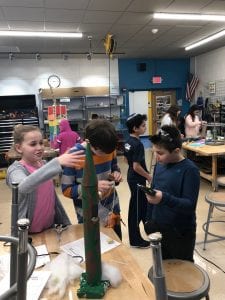

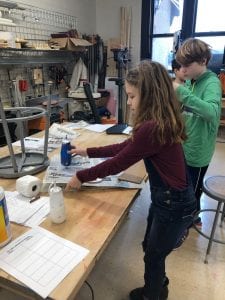
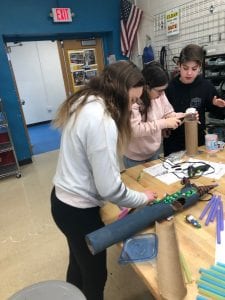
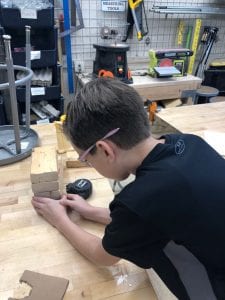
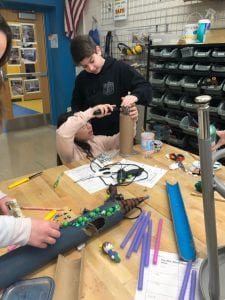
This week in 5th math we spent the first part of each class participating in a math talk where we looked at four different numbers and had to figure out ways each number didn’t belong. The kids had amazing thoughts that they were able to justify and explain to the rest of the class. Today, we began to create our own “which number doesn’t belong” posters that will be posted in the hallway for other students to try and solve. An example of a Which Number Doesn’t Belong activity is posted below. Ask your child about it and discuss how many different ways you can find for a number not to belong this weekend!
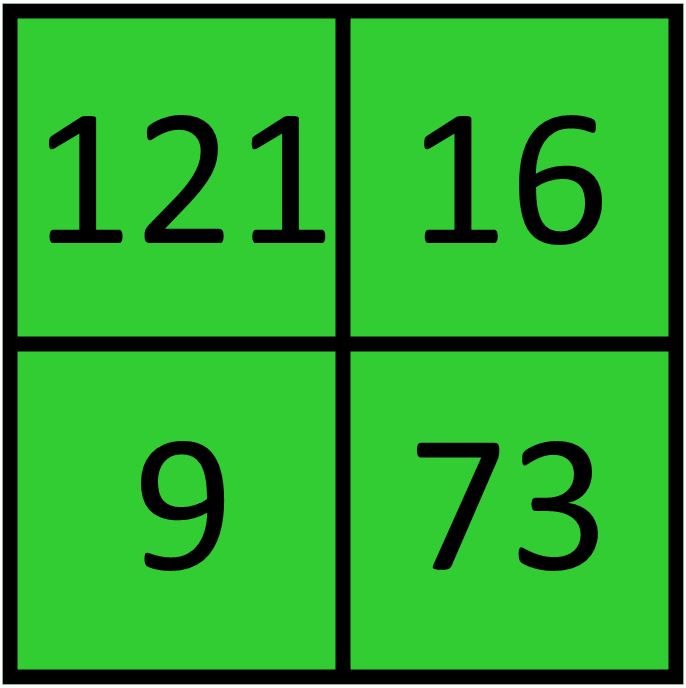
This week in 5th science, we prepared for our brain-check by each creating our own Kahoots to quiz the rest of the class on. Students used the study guide to create questions to help the other students prepare and study. This activity helped the students prepare because it required them to go through their notes and textbook to create the questions, thus allowing them to review and study as they created. They then were able to participate in another review when they got the opportunity to play each other’s Kahoots. As we take more assessments throughout the year we will continue to focus on different study strategies so students have a “toolbox” of strategies to use as they continue to go through school.
This week in 6th grade science, students finished up their unit on what can cause populations to change. Throughout the unit our main focus was figuring out and understanding why the sea lamprey caused a decline in the trout population. Students each wrote their own scientific explanation based off of this using a claim, evidence, and reasoning. Since this was our first time writing a scientific explanation this year, we went through many revisions until each student was proud of their piece. Watching your kids learn and grow through each revision of their scientific explanations was amazing to see. I am so proud of what they created. Stay tuned to see their final pieces published on their blogs!
This past week in science, 6th graders learned what competition looks like within an ecosystem with fruit loops!
At the start of the activity every student was given an animal that they were going to act as in the activity. Students were then asked to take however many fruit loops they thought their animal needed to survive. Some students took huge handfuls, others took smaller handfuls. Students then sorted their fruit loops into piles by color. Then, the game truly started…
Each color of fruit loop resembled different aspects of an ecosystem.
Green = plants
Blue = water
Red = meat
Yellow = shelter
Purple = pollution
Students were then given different scenarios where they lost many of their fruit loops. For example, if you are an herbivore get rid of all your red “meat” fruit loops. If you are a carnivore, get rid of all your green “plant” fruit loops. Students were then given scenarios where they lost many of their shelters, waters, and foods. After a few rounds, some animals started to die because they began to run out of resources to survive.
Afterwards, students were asked to think about competition within an ecosystem and what that means. Some students wrote about how there are not enough resources for everyone to survive and that animals have to compete for resources to survive in their ecosystem. This is something we will continue to talk about and discuss this week.


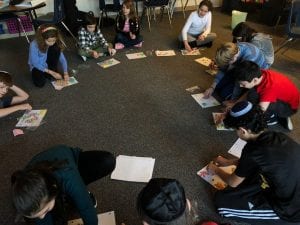
This week in 5th grade science, we learned about conductors and insulators. Students were asked the investigative question, “What materials will slow the transfer of energy better than others?” Along with this, their goal for this project was as follows: Create the best insulator for a plastic water bottle that will keep the water in it the coldest for the longest amount of time.
Students worked with their groups using their science text book, as well as online resources to research what materials are the best insulators. They then created a plan and sketch of what they were going to build. Finally, today, we started the building process where students made their sketches and ideas come to life.
Next week, students will continue to build. Once everyone is done we will test our insulators by measuring the initial temperature of the cold water and then checking our thermometer every 5 minutes to see if our temperature is getting warmer or staying the same. After our first test, students will go back to their design and make improvements to make their insulators even better!


